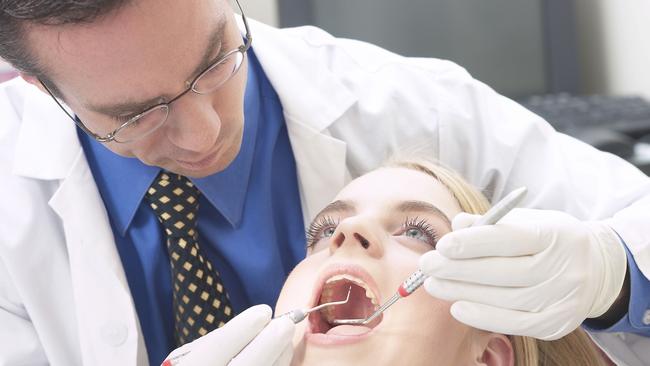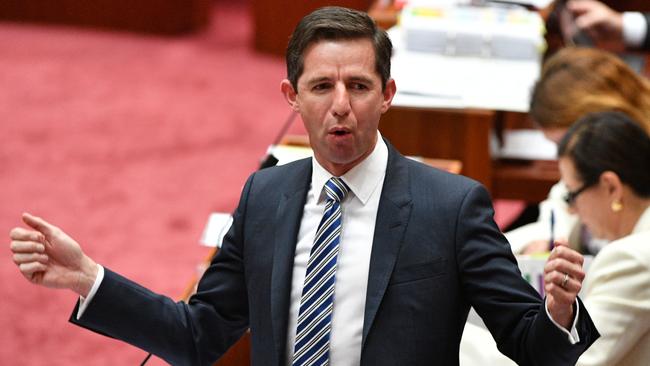Graduate jobs Queensland: Degrees most and least likely to get you a job
UNIVERSITY students face a tough job market, with new research revealing only 71 per cent find full-time work four months after graduation. Here are the courses that lead to the highest paying work.
Careers
Don't miss out on the headlines from Careers. Followed categories will be added to My News.
- Uni graduates think degree ‘vital to get job’
- Uni courses that offer the best chance at a job
- Australian universities marked down by graduates
- Mayor seeks meeting with PM
FEWER university students are securing full-time work within four months of graduating than a decade ago, a national report will reveal today.
It also reveals the gender pay gap persists, dropping slightly on average, but is up to $20,000 a year in some fields.
The National Report into Graduate Outcomes, released today and coinciding with the 2018 university offers, shows 71 per cent of students work full-time four months after they finish their degree, compared to 83 per cent a decade ago.

The report also reveals which degrees lead to the highest and lowest paying jobs in the students’ graduate year, with dentistry leading the pack.
Undergraduate students studying medicine and pharmacy had the highest chance of securing work, each having a 95 per cent success rate of finding a full-time job within four months.
Dentistry, veterinary science, rehabilitation and teaching degrees led to more than 80 per cent of undergraduates working full-time in four months.
Creative arts courses had 53 per cent of graduates working full time, while humanities, social sciences, psychology, science and mathematics had about 60 per cent of graduates in full-time jobs.
But there has been an increase in graduates finding part-time work, rising from 17.1 per cent in 2008 to 37.9 per cent in last year.
While dental graduates are the top earners at an average income of $78,000 a year, they have the largest gender pay gap.

Male dentists earn $94,600 compared to their female counterparts on $75,100.
But, overall, the average graduate gender pay gap has decreased to $1100, or 1.9 per cent, the lowest in 40 years.
The Federal Government is pushing for student employment outcomes to be included as a performance measure for universities wanting to receive increased funding, following a two-year freeze beginning this year.
It could see universities make savings by making cuts in courses with low-employment outcomes and focus their spending in areas of study more likely to lead to jobs.

Education Minister Simon Birmingham said students receiving their university offers today should make their decision carefully.
“It’s also clear that graduates in vocationally-oriented fields, such as dentistry and vet science, are more likely to gain full-time employment than graduates with more generalist degrees, such as management and commerce, and social sciences.
“It’s examples such as these that students should pay close attention to when considering offers.
“By ensuring universities are more accountable and transparent about the job prospects of their graduates, we are helping students to make the right choice the first time around.”
The data will be released in full on the Quality Indicators for Learning and Teaching website.
UNI COURSES THAT WILL GET YOU A JOB (within four months of graduation)
Science and mathematics — Full time 59 per cent, total employment 80.6 per cent
Computing and information systems — full time 73.3 per cent, total employment 82.1 per cent
Engineering — full time 79.4 per cent, total employment 86.5 per cent
Architecture and built environment — full time 75.2 per cent, total employment 87.2 per cent
Agriculture and environmental studies — full time 66.3 per cent, total employment 84.2 per cent
Health services and support — full time 72.7 per cent, total employment 89.9 per cent
Medicine — full time 95.9 per cent, total employment 95.9 per cent
Nursing — full time 79.3 per cent, total employment 91.7 per cent
Pharmacy — full time 95.2 per cent, total employment 95.8 per cent
Dentistry — full time 86.8 per cent, total employment 95.7 per cent
Veterinary science — full time 81.4 per cent, total employment 87.5 per cent
Rehabilitation — full time 85.7 per cent, total employment 95.8 per cent
Teacher education — full time 81.7 per cent, total employment 93 per cent
Business and management — full time 76.5 per cent, total employment 87.2 per cent
Humanities, culture and social sciences — full time 62.2 per cent, total employment 83.6 per cent
Social work — full time 70.9 per cent, total employment 86.1 per cent
Psychology — full time 60.3 per cent, total employment 84.8 per cent
Law and paralegal studies — full time 74.8 per cent, total employment 85.3 per cent
Creative arts — full time 53.2 per cent, total employment 80 per cent
Communications — full time 60.6 per cent, total employment 84.6 per cent
Tourism, hospitality, personal services, sport and recreation — full time 62.9 per cent, total employment 86.8 per cent

WHAT THEY PAY FIRST YEAR OUT (median annual full-time salary)
Science and mathematics — $57,500
Computing and information systems — $59,900
Engineering — $64,000
Architecture and built environment — $56,400
Agriculture and environmental studies — $55,800
Health services and support — $61,300
Medicine — $70,300
Nursing — $60,000
Pharmacy — $44,200
Dentistry — $78,300
Veterinary science — $51,600
Rehabilitation — $61,500
Teacher education — $63,500
Business and management — $55,200
Humanities, culture and social sciences — $57,000
Social work — $62,600
Psychology — $57,600
Law and paralegal studies — $60,000
Creative arts — $48,000
Communications — $50,000
Tourism, hospitality, personal services, sport and recreation — $52,200
Source: 2017 Graduate Outcomes Survey National Report



